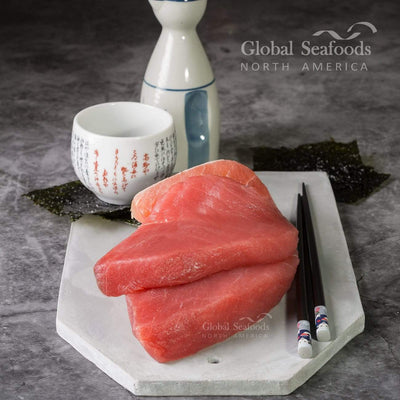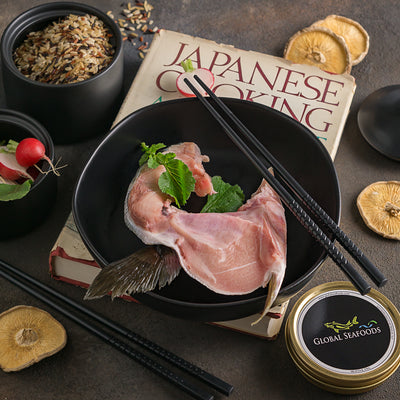Dry Tuna | Uses, Cooking Tips & Health Benefits

Dry Tuna: A Delightful Addition to Your Kitchen
Dry tuna, also known as dried or dehydrated tuna, is a culinary gem that enhances dishes with its intense umami flavor, crisp texture, and impressive nutritional value. Whether used in soups, salads, or as a standalone snack, dry tuna is a versatile and delicious addition to any kitchen.
Why You Should Try Dry Tuna:
✔ Rich, savory taste – Enhances dishes with deep umami flavors.
✔ Long shelf life – Ideal for storage and travel-friendly snacking.
✔ Packed with protein – A great high-protein, low-fat food option.
✔ Versatile in cooking – Use in soups, broths, salads, and snacks.
Let’s dive into the best ways to cook, use, and enjoy dry tuna in your kitchen!
🔗 Looking for premium dry tuna? Order from Global Seafoods.
Flavors that Mesmerize the Taste Buds
Dry tuna has a bold, concentrated taste that intensifies its natural umami notes. The drying process removes moisture, leaving behind a richer, more robust flavor.
What Makes Dry Tuna Special?
✔ Deep, Savory Umami – A flavor similar to aged cheese or smoked meats.
✔ Slight Sweetness – The natural sugars in tuna become more pronounced.
✔ Crunchy or Chewy Texture – Depending on how it’s dried and prepared.
Dry tuna elevates any dish, adding a depth of flavor similar to bonito flakes or smoked fish.
🔗 Want another umami-rich seafood? Try Albacore Tuna.
Cooking with Dry Tuna: Techniques and Tips
Dry tuna is incredibly versatile and can be used in a variety of ways to add texture and flavor to dishes.
1. Rehydrating Dry Tuna
🔥 Best For: Making dry tuna more pliable and easy to cook.
✅ Soak dried tuna slices in warm water for 15-20 minutes until softened.
✅ Drain and pat dry before using in stir-fries, soups, or salads.
2. Enhancing Soups and Broths
🔥 Best For: Adding depth to soups, broths, and stews.
✅ Toss in a few pieces of dry tuna while simmering broth.
✅ It releases natural fish oils and umami, creating a rich, flavorful base.
✅ Great for miso soup, seafood ramen, or fish stews.
🔗 Looking for more seafood ideas? Try Sockeye Salmon Fillets.
3. Adding a Crunch to Salads
🔥 Best For: Extra texture and flavor in salads.
✅ Crush dry tuna into small flakes or crumbles.
✅ Sprinkle over green salads, grain bowls, or poke bowls.
✅ The crispy texture pairs perfectly with fresh vegetables.
👉 Pro Tip: Mix dry tuna with olive oil, lemon zest, and sesame seeds for a gourmet topping!
4. Delectable Dry Tuna Snacks
🔥 Best For: A protein-packed, on-the-go snack.
✅ Enjoy dry tuna slices as a crunchy, high-protein snack.
✅ Pair with nuts, cheese, or dried fruit for a balanced treat.
✅ Use it as a charcuterie board addition for a seafood-inspired appetizer.
🔗 Want more high-protein seafood? Try Bluefin Tuna.
Health Benefits of Dry Tuna
Dry tuna isn’t just delicious—it’s also a nutritional powerhouse packed with lean protein, omega-3 fatty acids, and essential vitamins.
1. High in Protein 💪
🔥 Provides 25g+ of protein per serving – Great for muscle repair and weight management.
2. Rich in Omega-3 Fatty Acids 🧠
🔥 Boosts brain health, reduces inflammation, and supports heart health.
3. Packed with Essential Nutrients 🌱
✅ Vitamin B12 – Supports energy production.
✅ Iron & Selenium – Essential for immune function and metabolism.
🔗 Looking for omega-3-rich seafood? Try King Salmon.
FAQs About Dry Tuna
Q1: Is dry tuna similar to jerky?
A1: While dry tuna has a chewy texture like jerky, it has a stronger umami flavor and is often less salty.
Q2: How long does dry tuna last?
A2: Properly stored dry tuna can last several months. Keep it in an airtight container in a cool, dry place.
Q3: Can I make my own dry tuna at home?
A3: Yes! Simply:
1️⃣ Slice fresh tuna into thin strips.
2️⃣ Season with salt, pepper, or soy sauce.
3️⃣ Dehydrate in an oven at low temperature (150°F) for 4-6 hours.
Q4: What’s the best way to store dry tuna?
A4: Store in an airtight container or vacuum-sealed bag to keep it fresh.
Q5: Where can I buy high-quality dry tuna?
A5: You can find premium dry tuna and seafood products at Global Seafoods.
Conclusion – Elevate Your Culinary Game with Dry Tuna!
Dry tuna is a versatile, flavorful, and nutrient-packed ingredient that can transform any dish. Whether you add it to soups, sprinkle it on salads, or enjoy it as a snack, this umami-rich seafood is a must-have in your kitchen.
Why You Should Try Dry Tuna:
✅ Rich, savory flavor that enhances dishes.
✅ Long shelf life – Great for meal prep and travel.
✅ Packed with protein & omega-3s for a healthy diet.
✅ Easy to use in multiple dishes – From soups to snacks.
🔗 Ready to Experience the Best Dry Tuna? Order Here:
🔥 Premium Albacore Tuna
🔥 Sockeye Salmon Fillets
🔥 King Salmon
📢 Watch expert seafood recipes on the Global Seafoods YouTube Channel!
Also in News

How to Make Sea Bream Sushi With Dry-Aged Tuna & Crab Roll — Step-by-Step With Chef Joshua
A complete guide to making Sea Bream sushi at home, including filleting, curing, slicing, and building a Dry-Aged Tuna & Crab sushi roll. Chef Joshua shares professional tips for restaurant-quality results.

Boiled Crab for Game Night: Everything You Need for a Perfect Seafood Party
Take your game night to the next level with a Boiled crab party. Learn the best recipes, cooking tips, and hosting hacks for a memorable seafood feast.

Boiled Crab for Date Night: A Romantic Guide to the Perfect Seafood Feast
Make your next date night unforgettable with a romantic Boiled crab experience. This guide covers everything you need to know, from ambiance to the best crab varieties.








